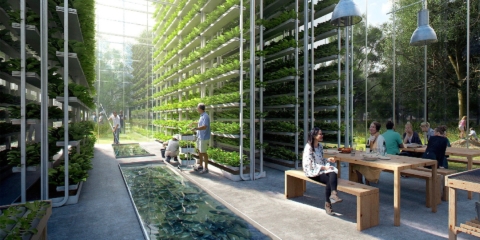Would you like to get notifications from Christian?
What Happened?
Industries around the world are constantly innovating, however, the construction industry has been slow to adopt new technologies. Mighty Buildings is changing all that with the development of a concrete-replacement known as light-stone material (LSM) used to 3D print a home in less than 24 hours.
Why is this important?
The company aims to solve four challenges within the construction industry.
The first: lack of workers. Currently, countless construction jobs remain vacant, which means construction is slowed or halted altogether. 3D printing technology supplements this labor shortage by requiring 90% to 95% less labor.
The second issue is materials. Wood is a renewable material, but it takes time, a lot of it, to grow new trees. LSM replaces the need for timber or concrete, so there’s no environmental or animal habitat damage from harvesting.
The third issue is time. The housing need is dire in many parts of the country. Being able to print a house in a day provides a production-line approach for housing shortages. Mighty Buildings currently has two models of homes. One is completely 3D printed, while the other is reinforced with steel to meet building code requirements and is considered a hybrid build. At this time, the new technology is being released incrementally in order to give time for the code changes to keep up. Lastly, construction waste is a challenge within the construction industry. While traditional stick-built houses leave behind concrete, wood, and other waste, 3D-printed homes eliminate nearly 100% of excess waste. The units are modular with a base size of 350 square feet. A larger unit is two units together, equaling 700 square feet. Since designs are computerized, making changes simply means tweaking a digital file. That’s much easier than reframing walls by hand.
Christian is a futurist and trendwatcher who speaks about the impact of exponential technologies like AI on organizations, people, and talents. Christian tailors his presentations to your audience's specific industries and needs.



Our world is changing at an exponential rate! A big tidal wave of digital transformation and disruption is coming at us fast. Many organizations see this wave as a threat and experience stress, but there are also organizations that just see this wave as an opportunity.

Imagine sitting with just 10-15 fellow executives at a premier location, gaining clarity on the impact of AI on your industry while enjoying an exquisite dining experience. These are not just meetings—they are transformative moments that will shape the future of your organization



In the future, 3D printing and generative design will allow for products to be designed in a more decentralized manner, and production will take place closer to the customer and fully on-demand. 3D printing technology will also allow for more customization and personalization of products.


The agricultural industry is ripe for disruption. Robotics, AI, and IoT are all technologies that have the potential to radically transform the way we grow food. In combination with vertical farming, these technologies could increase the efficiency and quality of agricultural products.

A human-centered society is one that puts people first and where technology is used to unite and empower people. It is a society that values biological life and dignity above all else. It is a society that recognizes the importance of human relationships and works to strengthen them. In a human-centered society, all members of the community are valued and treated with respect.


The future of healthcare is here. New technologies like AI, IoT, big data, and smart sensors make it possible to become the CEO of your own health. Imagine that your phone can listen to your voice and AI algorithms can detect small nuances in the tone of your voice that indicate specific diseases.
